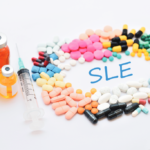“The problem is that stable, moderately ill patients have been lumped into trials with the more ill patients, and this narrows the gap between treatment (added to aggressive background therapies) and placebo (added to aggressive background therapies),” she said. “So the answer is to find ethical trial designs for the more stable patients by eliminating or gradually tapering down the background treatments during the study. Some have suggested that we should not bother to do this because these patients seem to be doing fine without new treatments. However, the frequent need to change medications in this population, coupled to their toxicities, makes it clear that they need new biologics also. It is just that they need a different trial design.”
Dr. David A. Isenberg, lead author of the report from the ILLUMINATE-1 tabalumab trial, told Reuters Health by email, “One caveat is that today it’s only been used in SLE patients with joint and skin disease. We need to look at the range of doses used in clinical trials and what seems a good balance between benefit, side effects, and costs.”
Dr. Isenberg, from University College Hospital, London, UK, believes that “the approach works and should be extended to use in other types of SLE.”


